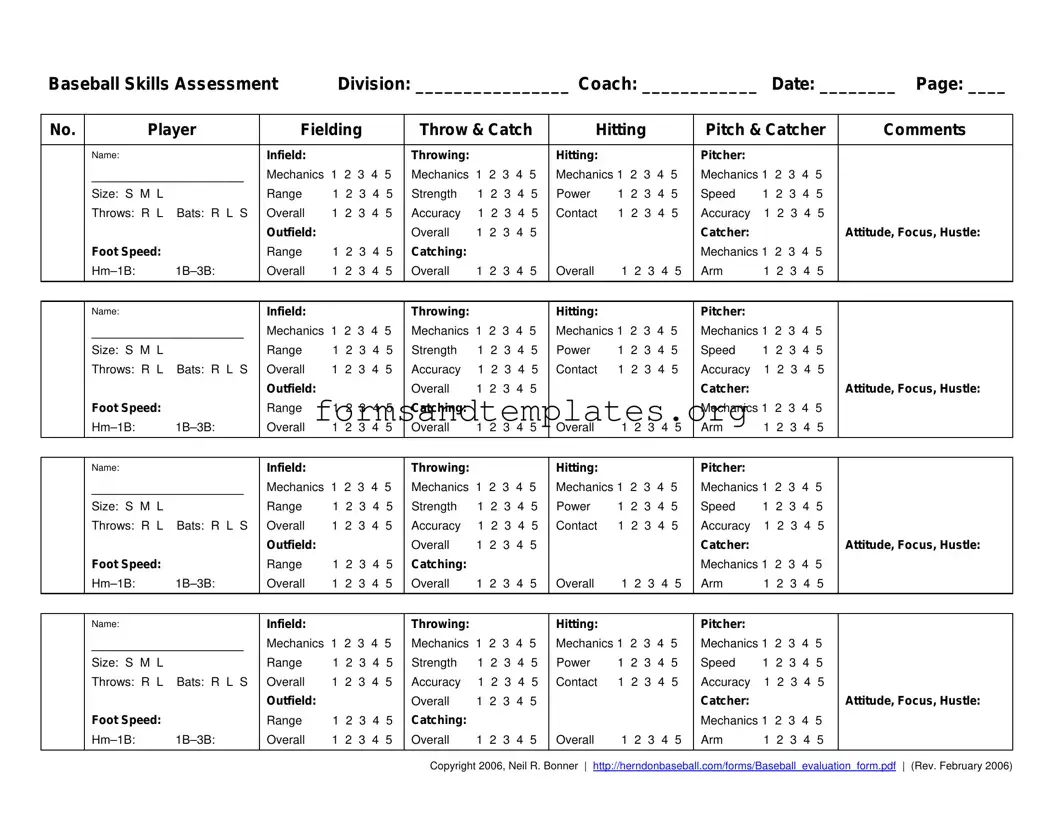The Baseball Assessment form is designed to evaluate players' skills during tryouts. Coaches use it to score players in various categories, such as fielding, throwing, hitting, and pitching. This helps in selecting players for teams, ensuring a fair assessment based on their abilities.
How is the scoring system structured?
The scoring system uses a five-point scale. A score of five indicates exceptional ability, while a score of one indicates very poor ability. Scores of two, three, or four represent varying levels of skill in between. This allows for a nuanced evaluation of each player's performance.
What categories are included in the assessment?
The assessment covers several categories:
-
Fielding (Infield and Outfield)
-
Throwing and Catching
-
Hitting (Mechanics, Power, Contact)
-
Pitching
-
Overall attitude, focus, and hustle
How long do the tryouts typically last?
Tryouts usually take between two to two and a half hours. This timeframe allows for thorough evaluation of each player's skills across various activities, including warm-ups, base running, fielding, and hitting.
What should players expect during the tryouts?
Players will participate in several activities, including warm-ups, base running, infield and outfield skills assessments, and hitting practice. They will also have breaks for water and will receive instructions from coaches throughout the process.
How are the final team selections made?
The first eight players are selected based on their quantitative scores from the assessment. The All-Star manager then chooses the remaining players based on additional criteria, which may include team dynamics and specific skills needed.
Can players be evaluated for multiple positions?
Yes, players can be evaluated for multiple positions. Coaches will assess skills for infield, outfield, pitching, and catching. This allows for a comprehensive understanding of each player's capabilities and potential fit for the team.
What factors can affect a player's score during evaluation?
Several factors can influence a player's score, including:
-
Performance in specific skill categories
-
Base running speed
-
Attitude, focus, and hustle during tryouts
-
Pitching and catching skills, which may receive additional points
What happens after the tryouts?
After the tryouts, coaches will review the scores and make selections. Players will be informed about the decisions regarding team placements. Feedback may also be provided to help players improve for future opportunities.

